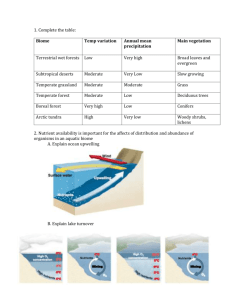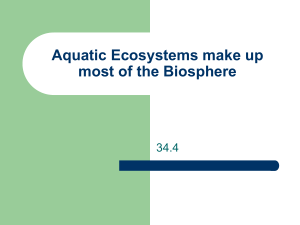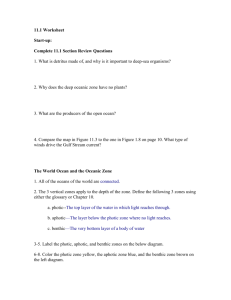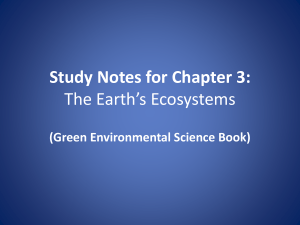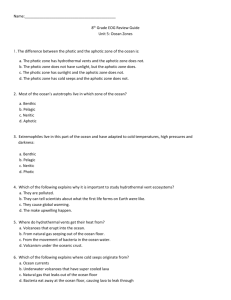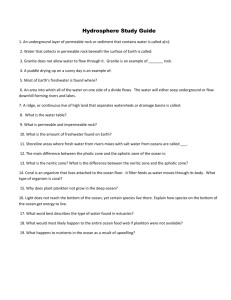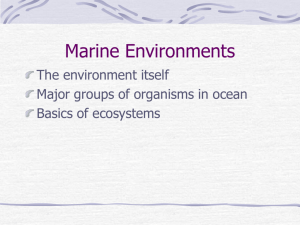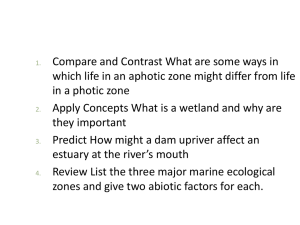SP_VT_stay_in_the_zone
advertisement
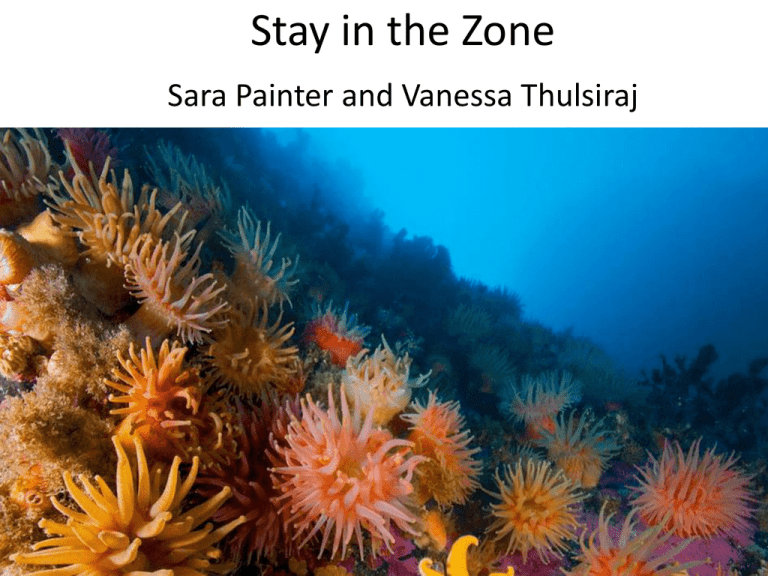
Stay in the Zone Sara Painter and Vanessa Thulsiraj Ocean Zones Categorized by light, depth and distance Photic versus Aphotic zone Sunlight Availability Photic zone: • Euphotic zoneportion of photic zone where photosynthesis occurs • 0-200 meters • The sunlit zone Aphotic zone: • 200 meters to ocean floor • Little to no sunlit zone • Critters: Intertidal, Neritic and Oceanic Zones Distance from coastal shoreline • Intertidal zone = area between high and low tide • Neritic zone = area between the low tide and continental shelf • Oceanic zone = area beyond the continental shelf (open ocean) • Critters Pelagic, Benthic and Abyssal Zones Water Depth • Pelagic zone = all depths of the open ocean. • Benthic zone = all sea bottom surfaces • Abyssal zone = part of benthic zone in deep ocean floor (abyssal plains) Critters Benthos • • • • Benthos means “bottom” Any organisms living on or in the ocean bottom Most found in shallow costal ocean floor Examples include sea stars, corals, crabs, seaweeds, snails, sea cucumbers, and sea squirts Nekton • Nekton means “swimming” • Any organisms that is strong enough to move against the ocean currents, by swimming or propulsion • Can determine their position in environment and some are capable of migrating long distances • Include many adult fish, adult squid, marine mammals and marine reptiles Plankton • Plankton means “drifter” or “wanderer” • Any organisms that is not strong enough to swim against the currents • Phytoplankton = plants which need light for photosynthesis • Zooplankton = small animals that feed on other plankton The Sinking Problem • All plankton must stay in • Phytoplankton are the basis the photic zone of the marine food chain • Either they need sunlight for photosynthesis • Or they are part of a food chain who’s foundation is phytoplankton Phytoplankton produce half of the worlds oxygen! Form and Function Plankton avoid sinking by: • increasing their surface area • or decreasing their density • Spines and flattened bodies


